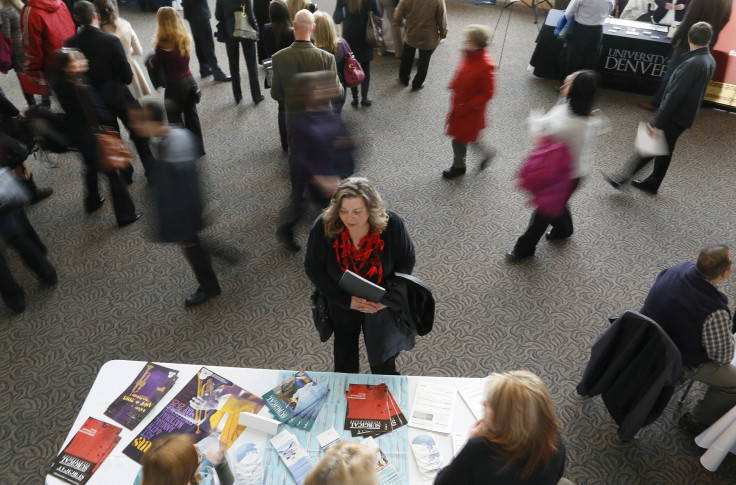A Closer Look At The Labor Force Participation Rate That Refuses To Rise

Donna Kingery quit her job as an X-ray imager in northwest Indiana in 2011. After eight years working in health care and a diagnosis of a heart valve disorder, lugging the equipment up patients’ stairs had become too much of a strain. Three-and-a-half years and many job applications later, the 46-year-old has given up looking for work.
“I have applied online through numerous sites, up to 50, such as Monster, Indeed, Hiringhealthcare.com and more directly through hospitals, clinics and companies’ own career boards, gone to job fairs, tried finding help in unemployment offices they say they provide, to no avail,” she said.
Kingery is one of 92.4 million Americans who are neither working nor looking for a job, the highest number in more than three decades. The October jobs report released Friday shows that labor force participation fell 0.1 percent from September and held steady from a year ago, at 62.8 percent. It’s the first time the percentage hasn’t declined from the year earlier since 2008. The rate has plummeted since 2009 and is at its lowest level since March 1978.
While not working, Kingery lived with an ex-boyfriend, family members and friends, moving around Indiana and Kentucky. She has borrowed about $12,000 from friends and family to keep her licensure current, buy gas to apply for jobs in person and even to feed her two guinea pigs after failing to find them another home. The pets later died because they didn’t have proper nutrition or vet care, she said.
“Friends and family were at first supportive. Then, after time, they all have intimated that it's my fault and have never acknowledged the hurdles faced by me or other unemployed people,” she said.
The official unemployment rate fell to 5.8 percent in October from 5.9 percent in September, when the measure fell under 6 percent for the first time since mid-2008. The official rate, also called U-3 by the Bureau of Labor Statistics, only counts people who are actively unemployed, looking for work and who have applied for a job within the past four weeks. That leaves out millions of Americans who have simply given up looking for work in a tough job market.
That portion of Americans, who say they would work if they could find a job but aren’t actively looking, is at a historical high. Sometimes they give up because, similar to Kingery, they don’t think jobs are available for them. Or they might decide after a lengthy, unsuccessful job hunt to go back to school and upgrade their skills. Others slip into an early retirement or semiretirement.
“The labor participation rate has been troubling for some time now,” said Keith Bliss, senior vice president at Cuttone & Co. Inc. “It ticking up one-tenth of 1 percent or it ticking down one-tenth of 1 percent is really not going to get it done.”
Part of the explanation is a surge of baby boomers retiring, but that’s not the whole story, Bliss said. People are still dropping out of the labor force for a variety of reasons. And almost every demographic group, from young people to prime-age workers, are participating less in the labor force than they were pre-2005.
One data point reflecting the trend is the 2.9 million Americans who have been unemployed for more than six months but still want to work. The share of long-term unemployed of the total unemployed population peaked at 45.3 percent in April 2010. The rate has since fallen to 32 percent, but that’s still far higher than the less than 20 percent in mid-2008.
Tara Sinclair, economist for Indeed.com and professor at George Washington University, argues that many partners in two-income households have chosen not to work to save on child care costs rather than accept a job or wages with which they aren’t pleased. As unemployment continues falling, employers will face more pressure to raise wages, she said.
Meanwhile, wages rose only 2 percent in October from a year ago, in line with nearly the past decade and barely faster than inflation at 1.7 percent. For people like Kingery, the numbers are hardly enticing. "I have no plans for the future," she said. "I'm just getting through it day by day."
IBTimes reporter Jessica Menton contributed to this story.
© Copyright IBTimes 2025. All rights reserved.






















